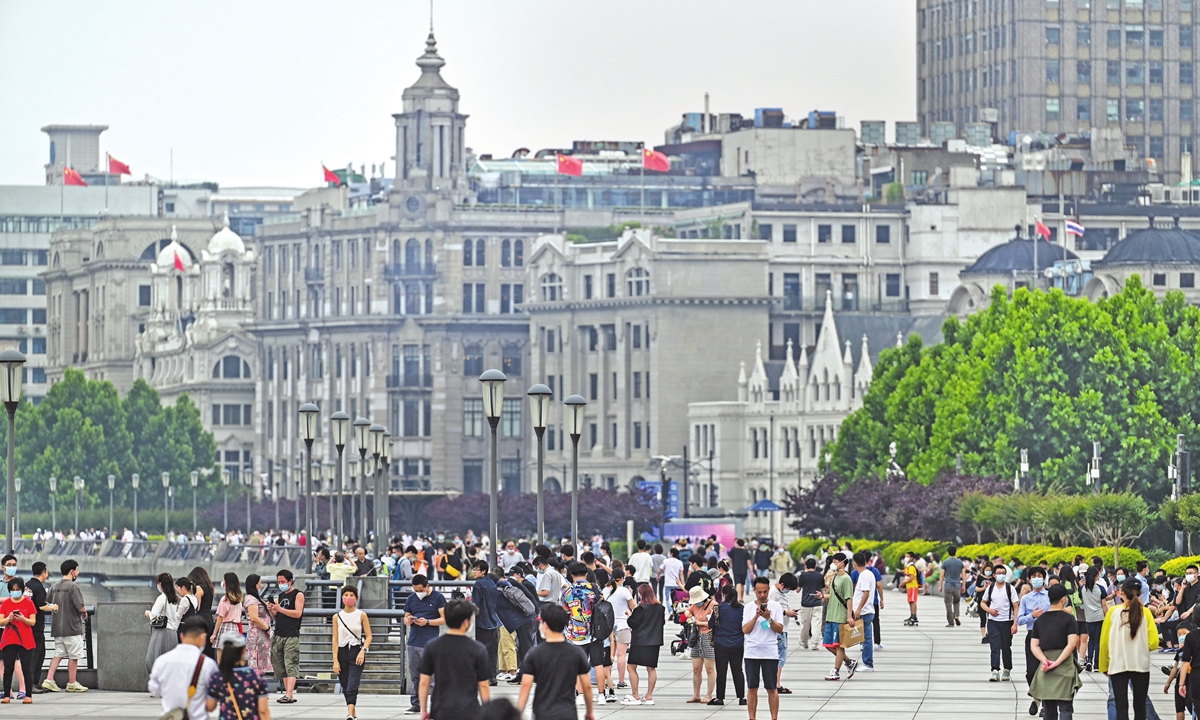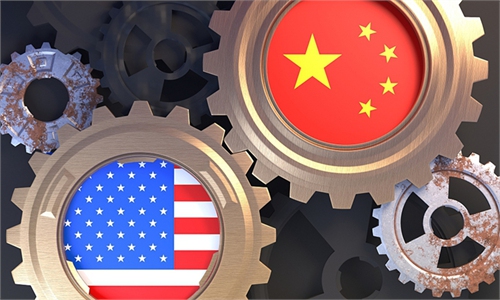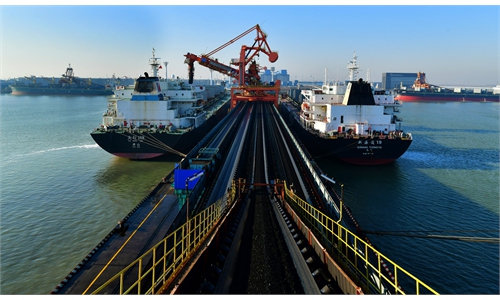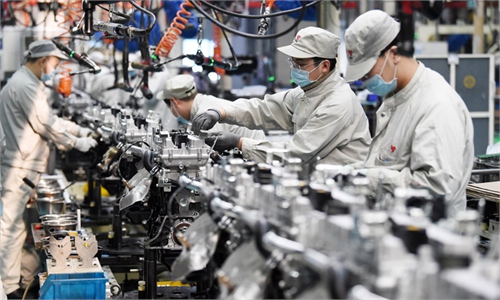Chinese local governments speed up implementation of economic stimulus policy in crucial 2nd quarter

People gather on the Bund along the Huangpu River in Shanghai on June 1, 2022, following the easing of COVID-19 restrictions in the city after a two-month lockdown. Photo: AFP
Senior officials of several Chinese provinces have recently made field trips to coordinate on solutions to problems encountered by the local economy, the latest efforts by China's local authorities to promote the implementation of policies and measures aimed at stabilizing the economy.
The move, together with other local efforts, shows that the recent national video teleconference, which was attended by more than 100,000 participants, as well as other pro-growth meetings, are having a huge spurring effect across the country, which may yield a better-than-expected recovery, experts noted.
During market research in Taizhou, East China's Jiangsu Province, on Thursday and Friday, Jiangsu Province Governor Xu Kunlin said that local officials should "seize every minute and second" to push policy implementation, as well as go all out to stabilize the economic market, according to the Xinhua Daily.
Zheng Shanjie, Party secretary of East China's Anhui Province, on Thursday listened to opinions and demands face-to-face from businesses in an on-site meeting in Hefei's Baohe district, aimed at helping enterprises address challenges, the Anhui Daily reported.
During an inspection trip in Ganzhou this week, Ye Jianchun, governor of East China's Jiangxi Province, stressed going all out to achieve the economic targets for the second quarter on the premises of ensuring safety, high-quality growth and environmental protection and laying a solid foundation for robust economic development for the whole year, according to the provincial government's website.
Local efforts
Alongside senior provincial officials' field trip to inspect economic situation, provincial governments, such as Central China's Henan Province and Northwest China's Gansu Province, also convened meetings on policy deployment to boost growth.
On Saturday, Central China's Hubei Province held a meeting to arrange major work in the next stage. The meeting noted that Hubei will push the implementation of a basket of economy-stabilizing policies to make sure the economy operates within a reasonable range.
The Communist Party of China's (CPC) top disciplinary agency also sent teams to leading Chinese commercial banks on missions to ensure the CPC central committee's financial support policies to the economy are fully implemented, according to a statement posted recently on the website of Central Commission for Discipline Inspection.
All these moves mark the intensified efforts at local levels when it comes to ensuring the implementation of a 33-item stabilization policy package released by the State Council at the end of May following an unprecedented national video teleconference with more than 100,000 participants, experts said.
At the meeting, Premier Li Keqiang stressed the implementation and effect of all stabilizing measures to safeguard market entities, employment, people's livelihoods and keeping the economy operating in a reasonable range.
After a series of recent pro-growth meetings at the central level, it now depends on whether local efforts can keep the economy within a reasonable growth range in the second quarter. Whether the Chinese economy can shrug off the severe impact of domestic epidemic flare-ups and a complicated international environment in the second quarter is crucial to achieve the full-year growth target of 5.5 percent, Tian Yun, former vice director of the Beijing Economic Operation Association, told the Global Times.
The provincial officials' move to carry out economic work also showed local governments' urgency to study detailed, distinctive work plans based on the region's own situation, after a consensus was reached among policymakers to stabilize the economy.
"At this time, local governments themselves are motivated to launch economic stimulus plans, as many of them will encounter financial problems if economy does not improve in the coming months," Cong Yi, professor at the Tianjin University of Finance and Economics, told the Global Times.
Many local governments in China have seen their fiscal revenues drop in recent months, particularly as the recent Omicron flare-up in Shanghai disrupted the country's supply chains. For instance, Shenzhen's general public budget revenues dropped by 12.6 percent in the first four months, Beijing's dropped 3.5 percent, while Shanghai's revenues dropped by 6.63 percent.
According to Tian, if the economy is stuck in a low-growth state for too long, the costs of bringing it back to the original trajectory will be huge. This is why all levels of governments - from the State Council, the cabinet to ministries to local governments - are racing to boost economic growth, he said.
Cong noted that the recent top-down efforts to stimulate the economy reflect China's institutional advantages, as policies are pushed forward in the country in a manner of "unified deployment, unified action and regional dynamic role."
"It means that when difficulties come, efforts are launched with a clear direction instead of having fragmented, contradictory policies," Cong said.
Bright prospects
Such efforts by local governments to implement economic stimulation generates hope among analysts about China's economic prospects this year, which already showed some unexpected positive signs recently despite challenges imposed by the recent lockdown in Shanghai and the lingering coronavirus spread.
China's US dollar-denominated exports grew 16.9 percent on a yearly basis to $308.25 billion in May, customs data showed, largely beating market expectations.
This is proof that notwithstanding the current economic downward pressure, there should be a strong rebound in the Chinese economy in the third and fourth quarters, as China's economic fundamentals have not changed, experts said.
"The export growth figure, which far exceeded forecasts of around 8 percent, indicates that the Chinese industrial chain and supply chain, especially in the Yangtze River Delta region, is recovering faster than expected, an indication that the Chinese economy may be more resilient than many had forecast," Tian noted.
This, together with the supportive measures, has and will continue to inject confidence into the market and the real economy at the critical junction of the Chinese economy, he said.
Cong holds a more cautious viewpoint, saying that whether China can achieve its economic target is dependent upon the speed and effects of local economic stimulus policies.
According to him, exports should not be the major backbone of China's economic growth, as the sector has too many uncertainties. China's major challenge is that its focus of economic work nowadays, which is internal circulation, has not shown enough momentum to recover.
"China's consumption abilities and demands are there, but the problems still lie in removing market hurdles, such as different regional market standards or the mutual blockades at large internet platforms, that suppress consumption scale," Cong said.
He added that once policies are implemented to remove those hurdles, as listed previously in the government's plan to set up a unified market, consumption demands will be released and a solid economic rebound can be expected.





